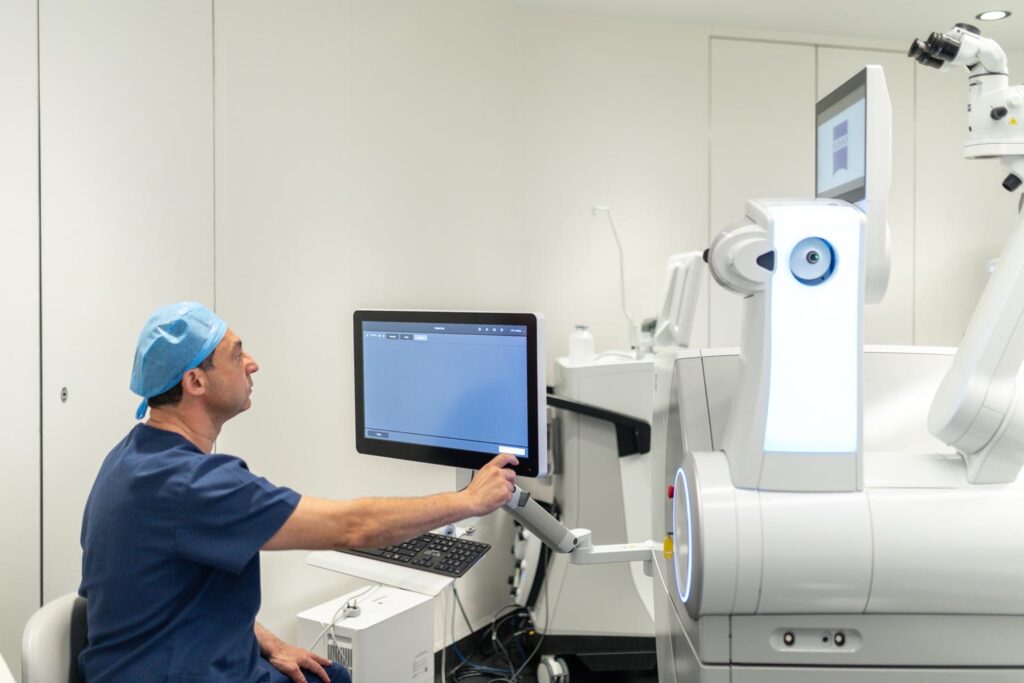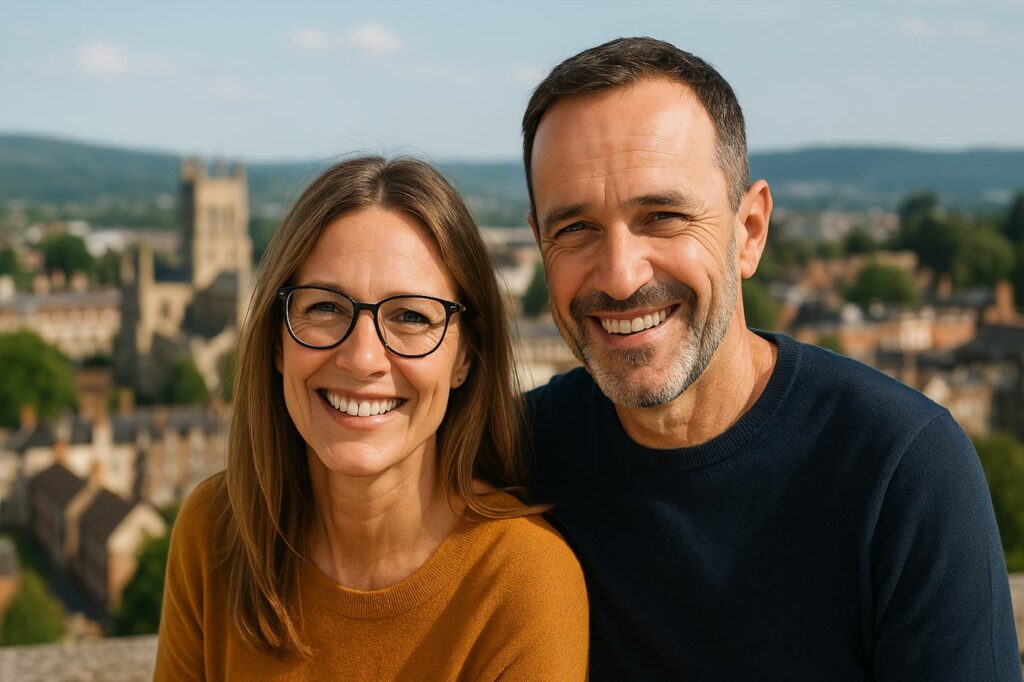Understanding Enhancements, Safety and Modern Alternatives!
The short answer
Yes, it is possible to have LASIK more than once, but it is not always necessary or advisable. A second LASIK procedure, often called an enhancement, can safely refine vision for the right candidate. The decision depends on the thickness and health of the cornea, the stability of the prescription, and the reason for any visual change.
Many people achieve long-term clarity from a single treatment. In cases where vision shifts slightly over time, modern diagnostics allow us to assess whether a small laser adjustment is appropriate or if another method would be safer. The good news is that with current technology, most patients who notice vision changes years later have excellent options and few ever need a repeat LASIK.
Why someone might need LASIK twice
LASIK reshapes the cornea permanently, but the rest of the eye continues to age. There are a few situations where someone who had successful LASIK years ago may consider another procedure.
- Natural prescription regression. In a small number of patients, the cornea relaxes slightly after surgery, leading to mild short-sightedness again.
- Age-related lens changes. From the mid-forties onwards, the natural lens begins to stiffen, reducing near focus. This condition, known as presbyopia, can make vision seem less sharp even if the cornea remains perfect.
- Residual astigmatism. Occasionally a small amount of astigmatism remains after surgery and can be refined for even clearer vision.
- New lifestyle needs. Some people choose enhancement years later because their work or hobbies now demand sharper distance vision.
In each case, we begin with a complete diagnostic assessment to determine whether the cornea can safely support a second LASIK or whether another solution will offer better long-term results.
When LASIK can be safely repeated
If the cornea remains healthy and thick enough, and if the initial flap is well positioned, a second LASIK can be performed with excellent accuracy. The process is similar to the first procedure but usually quicker because only minimal reshaping is required.
Key factors that make a patient suitable for repeat LASIK include:
Stable prescription
Your vision should remain unchanged for at least twelve months before considering a repeat LASIK. This ensures that the original treatment result is stable and that any small adjustment will stay accurate over time. Operating too soon after a prescription change risks the eyes continuing to shift after surgery.

Adequate corneal tissue
The cornea must still have enough healthy tissue for safe reshaping. Each laser treatment removes a tiny layer, so measuring residual thickness is critical. Modern imaging allows us to calculate this precisely, confirming whether another LASIK is structurally sound.
Healthy surface
A smooth, hydrated corneal surface is essential for both comfort and healing. If there are signs of dryness, scarring or surface irregularity from the first surgery, these issues should be corrected before any enhancement is planned. A healthy surface supports sharper and more predictable outcomes.
Accurate historical data
Having access to previous surgical records helps us understand exactly how the first procedure was performed. Knowing the flap thickness, treatment zone and laser profile allows for more precise planning and ensures the safety of any additional correction.
Enhancements are generally considered in two time frames:
Early refinement
Some patients benefit from a small enhancement within the first year if tiny residual errors remain after their initial recovery. This is usually a quick, low-risk adjustment that fine-tunes clarity and alignment without changing the corneal structure significantly.
Late enhancement
A second LASIK may also be considered many years later if mild regression occurs or visual demands evolve. For example, a patient who enjoyed perfect distance vision for fifteen years may notice slight blur when driving or using digital screens. In these cases, modern diagnostics confirm whether the cornea still qualifies for a safe enhancement or if another technique would provide a better long-term result.
Both can be successful when guided by modern imaging, though the approach differs depending on how the original flap and tissue healed.
When LASIK should not be done again
Not every eye is suitable for a second LASIK, and knowing when to avoid it is just as important as knowing when it is safe.
A repeat LASIK is not recommended when:
- The cornea is too thin after the first procedure.
- The surface has become irregular or shows early signs of keratoconus.
- There is chronic dry eye or reduced tear production.
- The patient’s vision changes are due to the natural lens rather than the cornea.
- There is scarring or incomplete healing of the original flap.
Attempting to reshape an already thin or irregular cornea increases the risk of ectasia, a rare condition where the cornea weakens over time. That is why every decision to re-treat must be based on precise mapping, including corneal topography, pachymetry and wavefront analysis.

The pre-assessment process
Before any consideration of a second LASIK, I carry out a full diagnostic work-up. This includes:
- Corneal mapping with high-resolution topography.
- Thickness measurement with optical coherence tomography.
- Tear film assessment to check for dryness.
- Wavefront or aberrometry testing to detect subtle visual distortions.
- Retinal imaging to rule out other causes of blur.
These scans create a three-dimensional fingerprint of each eye. Only when every parameter confirms safety do we discuss the potential benefit of an enhancement. If the data suggest that the cornea has reached its safe limit, we explore alternative vision-correction options.
Alternatives to a second LASIK
One of the advantages of modern refractive surgery is choice. Patients who are not ideal candidates for repeat LASIK can still enjoy clear vision through other advanced treatments.
SMILE (Small Incision Lenticule Extraction)
For patients with mild regression or stable corneas, SMILE provides precise correction through a tiny keyhole incision. Because it does not involve a surface flap, it preserves corneal strength and minimises dryness.
PRK or LASEK
If the cornea is slightly thin but otherwise healthy, surface laser treatments such as PRK or LASEK may be used to fine-tune vision. These reshape the cornea from the surface rather than beneath a flap, allowing retreatment without weakening the tissue.
EVO ICL (Implantable Collamer Lens)
For those whose prescriptions fall outside the laser range or who have limited corneal thickness, the EVO ICL offers a reversible, internal solution. The lens is placed inside the eye in front of the natural lens and provides high-definition vision without altering the cornea at all.
Refractive Lens Exchange (RLE)
For patients over forty with presbyopia or early cataract changes, RLE may be the best route. By replacing the ageing lens with a premium multifocal or extended-depth-of-focus implant, we correct both distance and near vision in a single step.
Each alternative is selected based on the individual’s anatomy, lifestyle and long-term goals. The aim is always to achieve clear, stable and comfortable vision for life, not just to repeat the same operation.
The positives of LASIK enhancement
When a second LASIK is appropriate, the outcomes are usually excellent. Because the adjustments are small, results tend to be even more precise than the first time.
- Visual recovery is rapid, often within twenty-four hours.
- There is little or no discomfort, thanks to the same anaesthetic-drop protocol.
- The improvement can be dramatic for those with small residual prescriptions.
- The safety record for well-planned enhancements is extremely high.
I often remind patients that a second LASIK is not a sign of failure. It is simply fine-tuning a complex optical system that can change slightly over time. Most enhancements are motivated by the pursuit of perfect clarity rather than dissatisfaction with the first result.

The importance of personalised planning
No two eyes are identical, and no two LASIK procedures are exactly the same. That is why the decision to perform a second treatment must be highly individualised.
At our clinic we maintain long-term relationships with patients after their initial surgery. This allows us to track vision stability, corneal thickness and ocular health year by year. If any regression occurs, we already have the data needed to plan safely.
Our philosophy is simple; we treat for precision, not repetition. If a minor adjustment will genuinely improve vision, we offer it. If another method is safer or more beneficial for the patient’s age and eye health, we recommend that instead.
What happens if vision changes years later
Vision can shift slightly over the course of life even after perfect LASIK. These changes are usually due to the lens inside the eye, not the cornea that was treated.
For example, around the age of forty to fifty, presbyopia causes near tasks such as reading or phone use to become blurry. In this situation, repeating LASIK on the cornea would not solve the problem, because the issue lies deeper within the eye. A lens-based treatment such as Presbyond Laser Blended Vision or Refractive Lens Exchange offers a more sustainable answer.
By understanding which structure of the eye has changed; the cornea or the lens, we can tailor the correction precisely.
Life after LASIK: long-term expectations
The majority of patients never require a second procedure. LASIK results are highly stable, with studies showing lasting clarity for fifteen to twenty years or more. Good eye care, UV protection and regular check-ups help maintain those results for life.
If mild regression does occur, it is often so small that glasses are only needed for specific tasks such as night driving. Knowing that enhancement is possible when necessary provides reassurance but should not create expectation.
Health Of The Eye Is Key
You can have LASIK eye surgery twice, but only if your eyes are healthy and your cornea allows it. The second procedure is usually simpler and gentler, but it must be carefully assessed using modern diagnostic scans.
For some, an enhancement is the right choice. For others, a newer technique such as SMILE vs LASIK, PRK, ICL or lens replacement will achieve better long-term clarity. The key is expert evaluation and a personalised treatment plan that considers your eyes today and how they will change in the years ahead.
Final Words from Dr Fadi Kherdaji
“Patients often ask whether LASIK can be repeated if their vision changes. My answer is always the same, yes! When it is safe and when it makes sense. The real question is not whether it can be done, but whether it should be.
Every pair of eyes tells its own story. With the advanced diagnostic tools we have today, there is no need for guesswork. We can see exactly how much tissue remains, how the cornea has healed, and which solution will give the clearest, safest outcome.
For some, that means a small enhancement; for others, it means exploring new technology such as ICL or lens replacement. My goal is never to repeat surgery for the sake of it, but to guide each patient toward the most intelligent and sustainable vision correction possible.”


